I'm learning JavaScript at the moment on freecodecamp and they have an example for nested for loops in one of their excercises:
var arr = [[1,2], [3,4], [5,6]];
for (var i=0; i < arr.length; i++) {
for (var j=0; j < arr[i].length; j++) {
console.log(arr[i][j]);
}
}
With console.log = 1 2 3 4 5 6 undefined.
I understand for loops more or less, and I understand that [i] and [j] are used to access the array (I think?). I just don't understand why at the end it just prints out those numbers? I found this question asked a few years back but it just explains how to write them, not how they work:
For loop in multidimensional javascript array
I broke it down into:
var arr = [ [1,2], [3,4], [5,6]];for (var i=0; i < arr.length; i++) {
console.log(arr[i]);}
Which prints out
[ 1, 2 ]
[ 3, 4 ]
[ 5, 6 ]
undefined
and
var arr = [ [1,2], [3,4], [5,6]];
for (var i=0; i < arr.length; i++) {
for (var j=0; j < arr[i].length; j++) {
console.log(arr[i]); }}
which prints out:
[ 1, 2 ]
[ 1, 2 ]
[ 3, 4 ]
[ 3, 4 ]
[ 5, 6 ]
[ 5, 6 ]
undefined
and
var arr = [ [1,2], [3,4], [5,6]];
for (var i=0; i < arr.length; i++) {
for (var j=0; j < arr[i].length; j++) {
console.log(arr[j]); }}
which prints out
[ 1, 2 ]
[ 3, 4 ]
[ 1, 2 ]
[ 3, 4 ]
[ 1, 2 ]
[ 3, 4 ]
undefined
I understand the first two arr[i]. The loop iterates through the array and prints out the individual elements (in this case an array) and in the second one I guess it just does it twice because there are two loops. What I don't understand is:
- why the last array in arr[j] is not printed out (where did the [5, 6] go?)
- why arr[i][j] suddenly eliminates the arrays and just prints out the numbers
- where the 'undefined' comes from
Could anyone help me out with this and explain the steps the code takes before printing it out in the console? I would really like to understand it but don't even know how to search for this question the right way.
